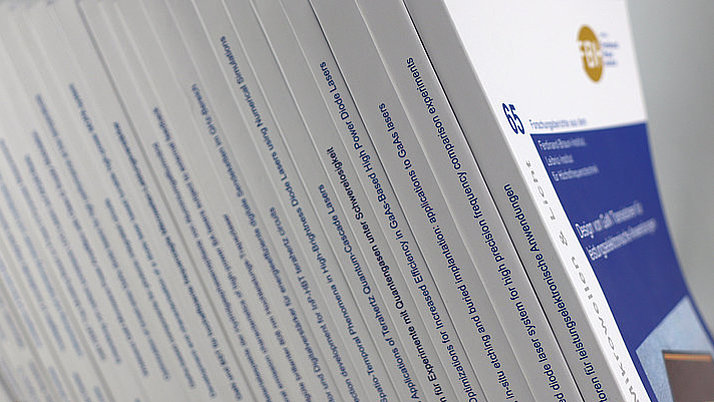Tunable Graphene Phononic Crystal
J.N. Kirchhof1, K. Weinel1,2, S. Heeg1, V. Deinhart2,3, S. Kovalchuk1, K. Höflich2,3, and K.I. Bolotin1
Published in:
Nano Lett., vol. 21, no. 5, pp. 2174-2182, doi:10.1021/acs.nanolett.0c04986 (2021).
Abstract:
In the field of phononics, periodic patterning controls vibrations and thereby the flow of heat and sound in matter. Bandgaps arising in such phononic crystals (PnCs) realize low-dissipation vibrational modes and enable applications toward mechanical qubits, efficient waveguides, and state-of-the-art sensing. Here, we combine phononics and two-dimensional materials and explore tuning of PnCs via applied mechanical pressure. To this end, we fabricate the thinnest possible PnC from monolayer graphene and simulate its vibrational properties. We find a bandgap in the megahertz regime within which we localize a defect mode with a small effective mass of 0.72 ag = 0.002 mphysical. We exploit graphene’s flexibility and simulate mechanical tuning of a finite size PnC. Under electrostatic pressure up to 30 kPa, we observe an upshift in frequency of the entire phononic system by ∼350%. At the same time, the defect mode stays within the bandgap and remains localized, suggesting a high-quality, dynamically tunable mechanical system.
1 Department of Physics, Freie Universität Berlin, 14195 Berlin, Germany
2 Ferdinand-Braun-Institut gGmbH, Leibniz-Institut für Höchstfrequenztechnik, 12489 Berlin, Germany
3 Helmholtz-Zentrum Berlin für Materialien und Energie, 14109 Berlin, Germany
Keywords:
Nanomechanics, phononic crystal, graphene, optomechanics, resonators, NEMS
© 2021 The Authors. Published by American Chemical Society.
Rights and Permissions
This is an open access article under the terms of the Creative Commons Attribution License, which permits use, distribution and reproduction in any medium, provided the original work is properly cited.
Full version in pdf-format.


